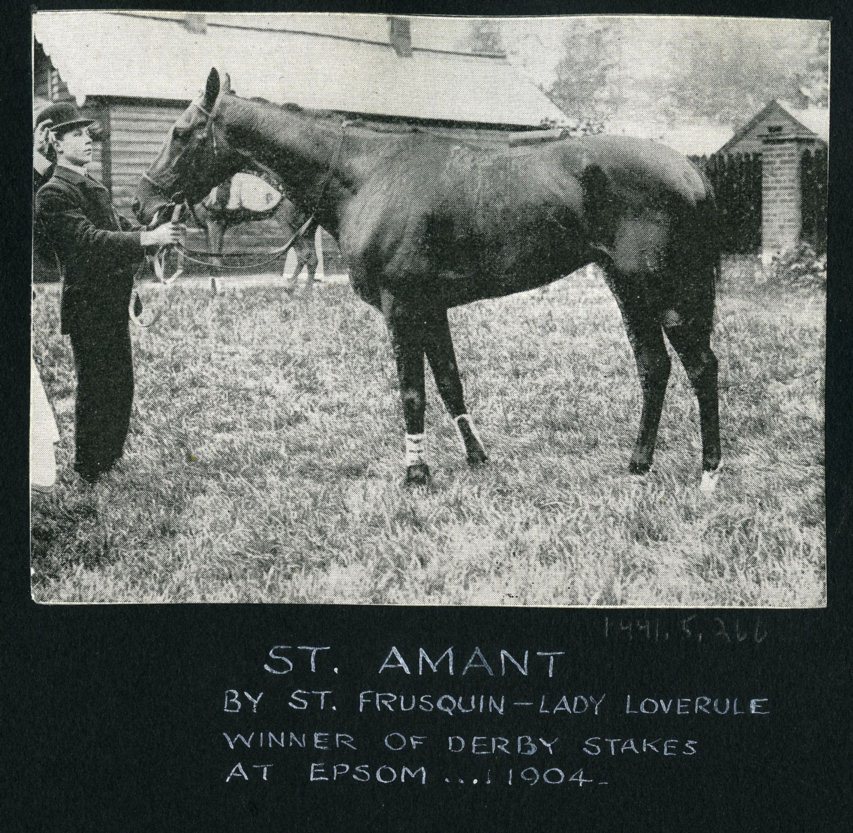Did you know that Palace House Stables has been the home of four Derby winners?
It’s hard to believe but in the 1860s Newmarket had gone out of fashion as a training centre for Derby winners, even though between 1788 and 1832 all bar three winners of the race had been trained in Newmarket.
It was felt that the Heath was too firm and the Downs of Sussex, Berkshire and Wiltshire were more attractive. Newmarket’s last Derby winner was Orlando in 1844… and that was a result of the Running Rein affair.
Fallen dramatically
Furthermore, Newmarket’s share of the national racing programme had fallen dramatically since the end of the 18th century whilst many races saw only two runners and fields of three or four were frequent. With fewer good horses trained in the town the appeal of owners to have their horses trained elsewhere accentuated the malaise and led to more unemployment and tough times for the local tradesmen.
James ‘Jem’ Godding, contrary to popular belief, firmly believed that if he couldn’t train a Derby winner on the Limekilns he could not train one anywhere. The Master of Palace House Stables, in 1862, had trained former Liverpool banker Richard Naylor’s Feu de Joie to win the Oaks and the owner was so confident about his Macaroni in the 1863 Derby that he backed him at long odds.
Macaroni was a well bred bay. His sire Sweetmeat’s progeny included two Oaks winners in Mincemeat (1854) and Mincepie (1856). As a three year old standing 15.2 hands he made a dramatic improvement winning at the Craven meeting before success in the 2,000 Guineas by three quarters of a length. Despite victory in the first colt’s classic of 1863, Lord Clifden, the previous year’s leading two year old was sent off as the 4/1 favourite while Godding’s horse was 10/1.
The Prince of Wales’s first Derby
Believed to be the first Derby the Prince of Wales (later Edward VII) attended the race was marred by incessant rain since early morning, and a cold wind which The Times stated meant the crowd was smaller than usual. In addition 34 false starts delayed the 31 runners by over an hour. Lord Clifden made most of the running and as they came into the straight the Derby became a duel between George Fordham on the favourite and Tom Chaloner on Macaroni. A fierce battle inside the final furlong saw Macaroni snatch the lead with 50 yards to go to win by a head. Naylor had scooped £100,000 from his bets – a vast sum when the winning prize was approximately £7,000. – and gave a gift of £3,000 to Godding and £1,000 to Chaloner.
A peal of bells rang out at All Saints Church Newmarket to celebrate Macaroni’s triumph. It is understood that Godding who lived on the doorstep of the Church disliked the sound of the bells and had agreed the vicar should be allowed to ring out the bells whilst he was away at Epsom. All Saints Church, which fell into disrepair, was rebuilt in 1877 on the same site. After speaking to the current vicar, Max Osborne and church administrator, Brian Thatcher I have established that those eight bells remain it is believed, in the original church tower which is encased in the new tower.
Unfortunately the peal of eight bells has not been rung for over half a century but not due to a lack of Newmarket trained Derby winners! “If they were, the tower would probably come down due to there being a crack in the wall of the tower which could be exacerbated by the momentum of the bells”, said Brian. He continued to say that the bells can now only be chimed by one person to give a significantly lower volume than in Godding’s era.
Vindicated
Godding’s faith in the Heath had been vindicated and the events of 20 May 1863 changed the perception that Derby winners could not be trained at Newmarket forever. Furthermore, the town was rejuvenated with the victory starting the re establishment of Newmarket as the major racing centre in the British Isles. This had a major effect on the local economy with more jobs becoming available for lads, farriers, saddlers and all of those people connected with racing.
Originally published on the National Heritage Centre for Horseracing & Sporting Art‘s Blog, and reproduced with their permission. Part two can be read here.

No Comments
Add a comment about this page